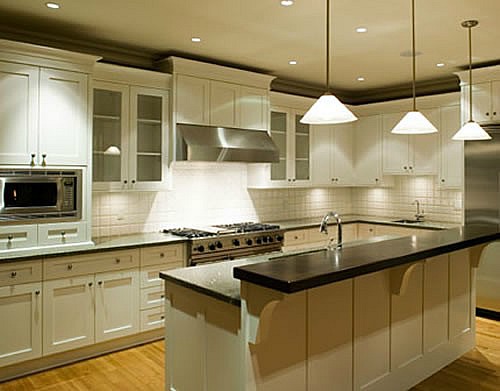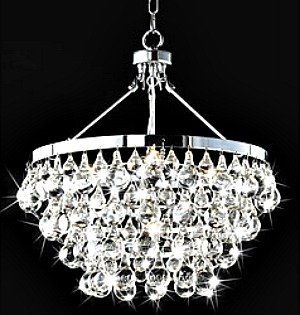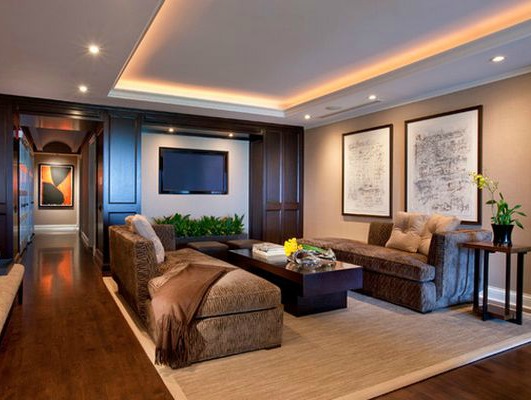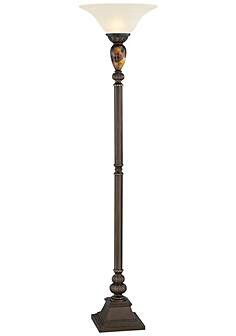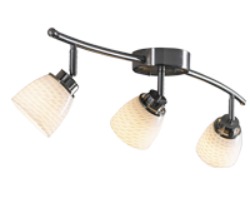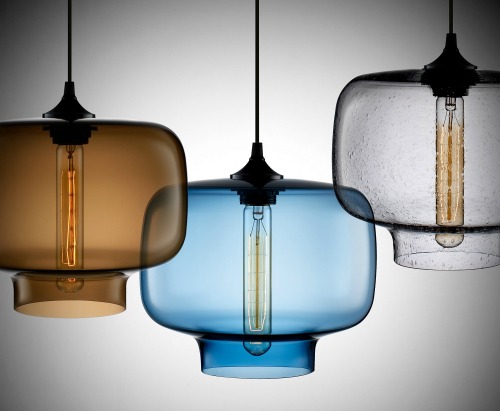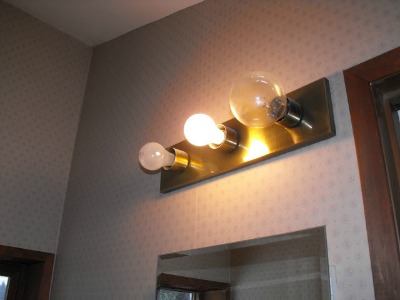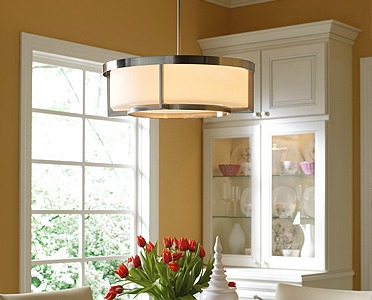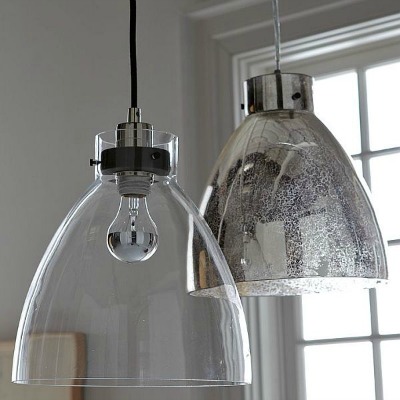The Best Interior Lighting for Selling Your Home
For a faster, more profitable home sale
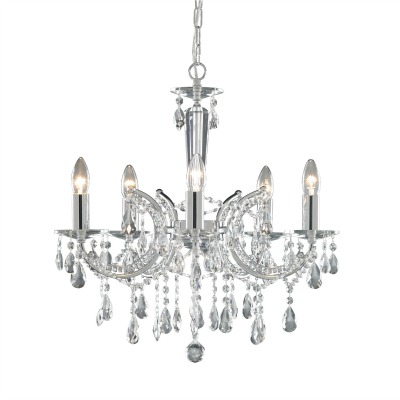
Interior lighting is often an afterthought during the building or renovation of a home.
It doesn’t matter if you have the most beautiful home design, if the lighting is insufficient, your home will never reach its fullest potential.
If you are preparing to sell your home, now is a good time to take a look at the interior light fixtures throughout your house.
Buyers respond positively to a well-lit house, and a good balance of natural and interior lighting will add value to your home, meaning more money in your pocket.
Home buyers are very savvy and sophisticated in their taste these days, and outdated light fixtures may cause them to rethink buying your home.
Updating your light fixtures is one of the most cost effective facelifts you can give your home.
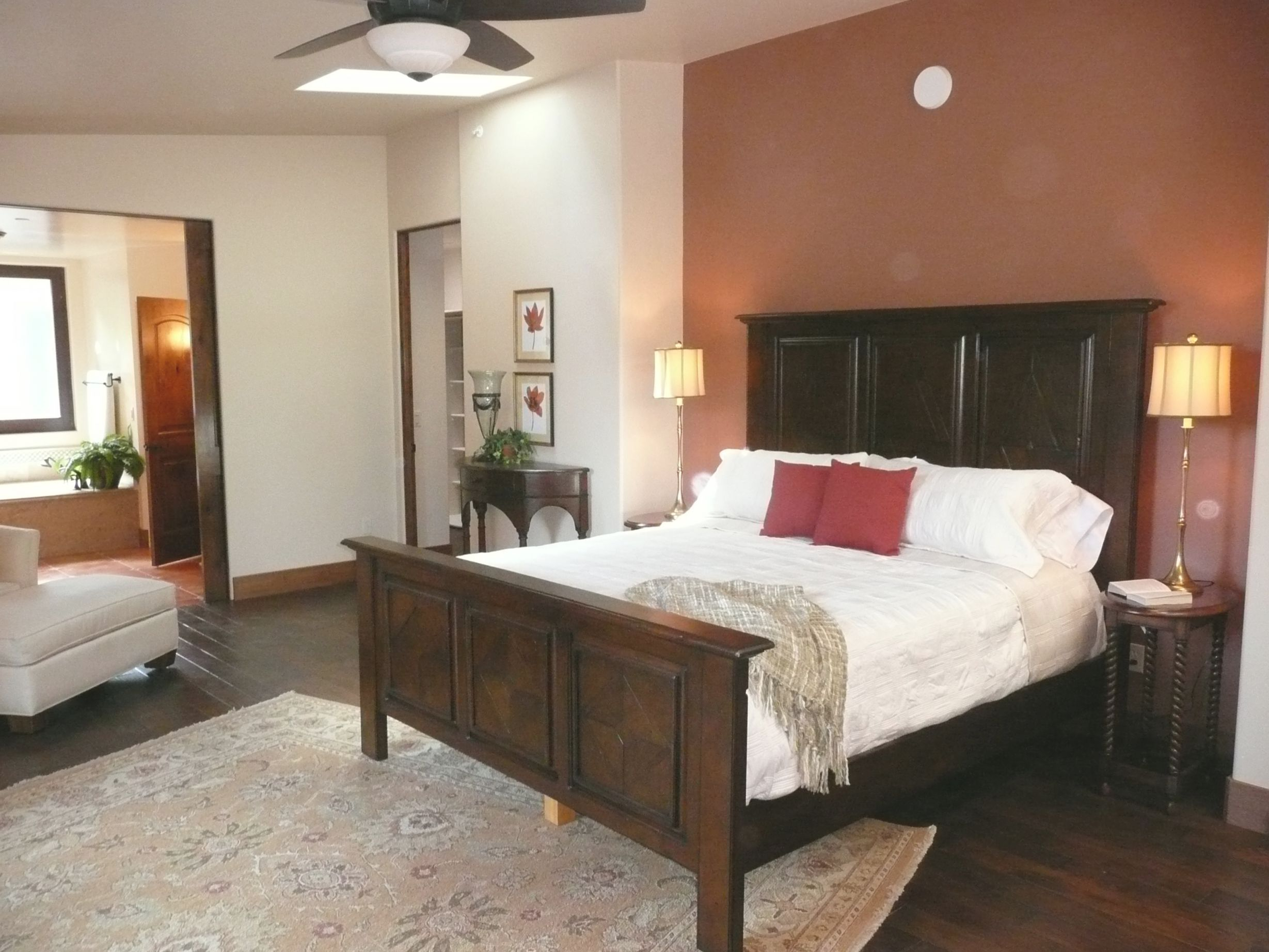 Bedroom lighting should always be relaxing and come from several different sources.
Bedroom lighting should always be relaxing and come from several different sources.A well-lit home will have layers of lighting that make it functional and welcoming. Each type of lighting has a different job.
Accent lighting, for example, is used to draw attention to a certain area or detail, such as a piece of artwork on a wall.
Natural light is important, as well. If you are staging your home to sell, you'll want to flood your home with as much natural light as possible. This can be done simply by opening (or removing) any window treatments where privacy isn't needed.
Buyers respond positively to a well-lit house, and a good balance of natural and interior lighting will add value to your home, meaning more money in your pocket.
Lighting functions
When planning the interior lighting for your home, you should first consider the purpose of each room. Think about function, form, balance and the atmosphere you wish to create.
Some rooms are multi-functional and each zone may require a different form of lighting. In addition to function, the light fixtures you choose should be decorative as well, so they enhance the style of your home.
The most effective interior lighting scheme will have a combination of three types of illumination. Lighting designers call this “layering.”
There are three major functions in any room as described below:
There are three major lighting functions in any room
1. Ambient Lighting
Ambient lighting is a general, evenly distributed source of light that brightens up an entire room.
Examples of ambient lighting are; natural light, ceiling fixtures, floor and table lamps, and indirect recessed or cove lighting.
Ambient lighting allows people to move around a space safely and comfortably in the dark.
The amount of ambient light you need depends on the style of the room and what type of mood you wish to create.
Examples of ambient lighting in home design
Recessed lighting fixtures - This form of contemporary lighting is a good choice for low ceilings and small rooms. Because the fixtures are recessed into the ceiling, they don't up space by protruding into the room. This makes a ceiling seem higher!
Recessed lighting, also known as "pot or can lighting," is suitable for almost every style of home decor. It gives a quiet, contemporary look to your home.
The old clunky floodlight style of recessed lighting is outdated. Consider replacing yours with a smaller halogen style, which looks much more sophisticated and subtle.
The downside...recessed fixtures are expensive to install. You will have to cut a hole in the ceiling and may need to do a bit of re-plastering.
Chandelier lighting - Gone are the days of the ostentatious, greatly embellished and chronically dusty chandeliers! Todays modern chandeliers have a fresh new look that will fit any interior home decor style.
Chandeliers are typically seen in a dining room or foyer, but these days are showing up in bathrooms, bedrooms, over kitchen islands and even laundry rooms. A crystal chandelier will effectively add drama and sparkle anywhere in your home interior design.
Because chandeliers are ambient they don't offer very good overall lighting, due to the fact that most of them direct their light upward instead of down.
Adding clip-on shades is a solution for some styles that'll help direct light downward. Select shades in a light neutral colors if you are home staging.
Cove lighting - Cove lighting is ideal for showcasing deep moldings or other interesting ceiling details. Cove lighting is built into the recesses, ledges or valences. Or it can be placed high up on walls.
Cove lighting focuses light upward, toward the ceiling or down the walls. It is typically used to highlight decorative details of the ceiling, but may be used as the main lighting of a room, as well.
If you like this look, try rope lighting, which can be strung inside a built-in ledge around the top of a room for soft ambient light.
Torcheres - A torcheres is a floor lamp that focuses light toward the ceiling. Torchere lamps bounce light off the ceiling and back down into the room. They work best in pairs to balance light and add symmetry to a room.
Torcheres function well in rooms that lack overhead lighting. A torcheres will create shadows in the room which can be brightened by using other forms of lighting, such as a table lamp.
The downside; if your ceilings are in bad shape, a torchere lamp will emphasize the flaws.
2. Task lighting
Task lighting is a focused light directed toward a specific area in a room.
It's main purpose is to illuminate a space so that you can perform chores like chopping onions at the kitchen counter, applying makeup in your bathroom or reading in your favorite chair.
Task lighting should be strong enough for people to work efficiently without straining their eyes.
You will find examples of task lighting in kitchens in the form of under cabinet lighting, pendants over kitchen islands and reading lamps next to beds, chairs and desks.
Examples of task lighting in home design
Track lighting - Track lighting is a series of light fixtures attached to a track. They're available in a variety of styles and lengths and the bulbs can be directed toward a particular area you want to focus on.
Track lighting fixtures are commonly seen in kitchens over an island, in workplaces, or above a piece of art. This form of lighting can serve as ambient lighting as well, works in every room of the house, and with most interior design styles.
The old track lighting fixtures with the clunky “big can” attachments are outdated, so you may want to replace them with smaller halogen spots, especially if you're selling your house. This will save energy as well.
Pendant lighting - Pendant lights are fixtures that hang in a straight line from the ceiling on a chain, a metal rod or cord. A pendant light will focus light straight down.
They are most often seen above kitchen islands, bathrooms, on each side of a bed, and sometimes in a corner nook over a favorite reading chair.
Pendants are usually hung in pairs and are available in a multitude of attractive colors, materials and styles.
Floor lamps - Floor lamps are designed for task lighting. They shine their light down or sideways toward a certain area.
Floor lamps work well next to chairs, behind sofas, and are available in a multitude of styles to fit any home decor.
Table lamps - Table lamps are the most common form of task lighting-- everyone has at least one. A table lamp provides light for reading, sewing, etc., and are a necessity next to every bed.
They can be decorative and serve as accent pieces throughout the house, making them a functional accessory.
3. Accent lighting
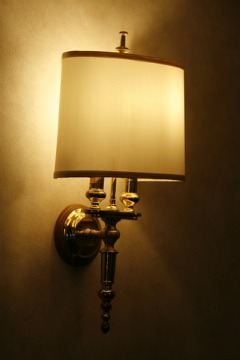 Wall sconce.
Wall sconce.The purpose of accent lighting is to draw attention to a certain area or detail, such as a piece of artwork on a wall.
Find accent lights highlighting a spectacular cove ceiling, a collection, bookcase, or trees and shrubbery outside.
Accent lights can also be used to add drama or create atmosphere in a room.
Examples of accent lighting in home design
Wall sconce lighting - Wall sconces, as pictured to the right, are subtle, elegant fixtures that attach directly to a wall.
They can focus light upward, down, or both directions at once.
You often see sconces hung in pairs, for example, one on each side of a fireplace, bed or piece of hanging artwork.
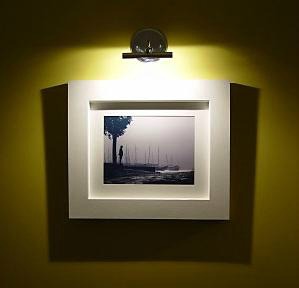 Accent lighting
Accent lightingWall sconces are used to illuminate dark hallways, an entryway or to add symmetry to a room.
Wall sconce lighting can be decorative as well as functional.
Picture lighting fixtures - Picture lighting fixtures are used to accent artwork.
They're typically attached to the top of a picture frame or above the artwork to highlight the subject.
Accent lighting is also used over or under shelving, behind artwork, or even below it, like a spotlight shining on a statue.
Natural light
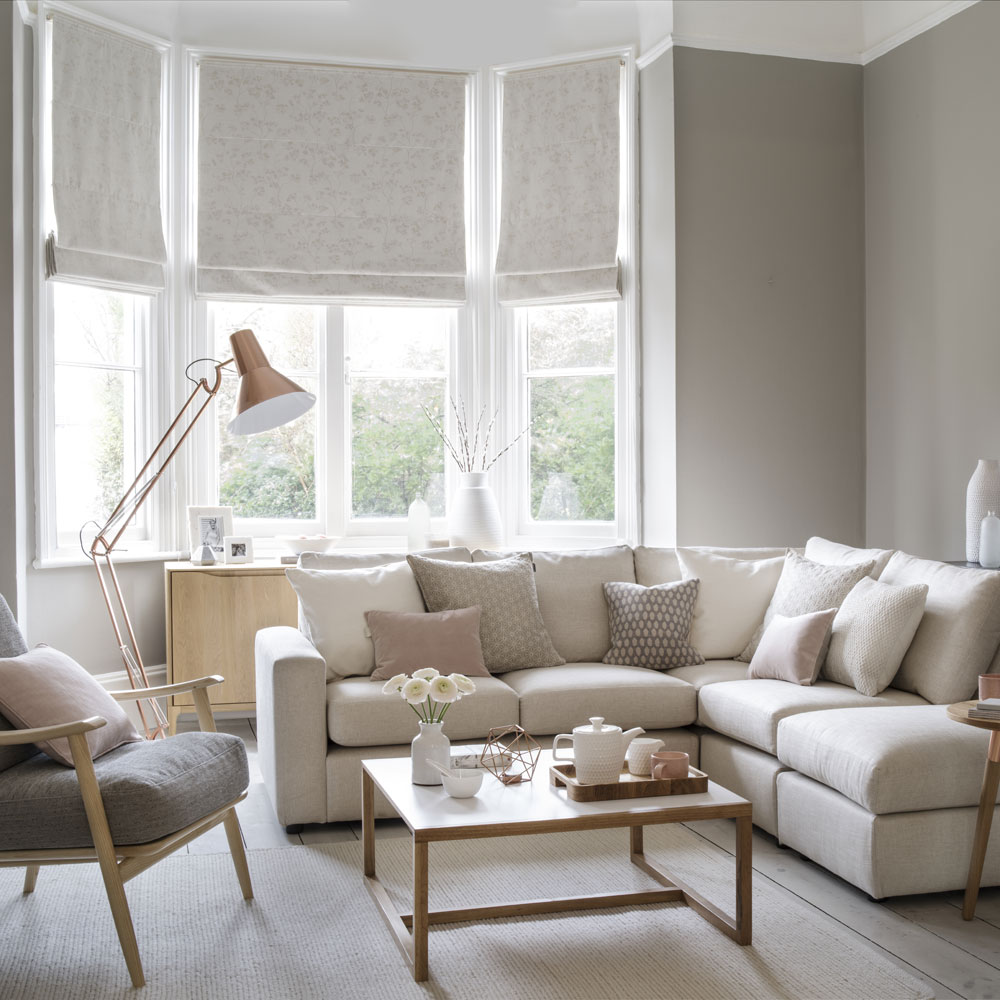 The infusion of natural light can make a small room feel larger than it really is.
The infusion of natural light can make a small room feel larger than it really is.A discussion about lighting would not be replete without mentioning natural light, which is the most preferred form of lighting in home interior design.
Natural light makes everyone feel good by infusing a room with sunny warmth and a feeling of spaciousness. It has the effect of making small spaces appear larger too.
If you're preparing your home for the real estate market, you should focus attention on the window treatments in each room.
Are the windows in your home shrouded in dark heavy draperies? Are window blinds hiding a beautiful view that buyers might miss seeing?
Your goal is to let in as much natural light as possible. Pull back draperies, wash windows until they sparkle, remove screens and open the blinds.
If you have a spectacular window with a great view, leave your windows bare. Allowing maximum natural light in will make the space seem more open by extending the room to the outdoors.
Light requirements for specific rooms
Each room in your home will have different lighting needs. When selecting fixtures for your rooms, you will need to assess the size of each room, the function, and how much natural light is coming in.
Kitchen - Overhead lighting works well for overall or ambient lighting in the kitchen, but task lighting should be added to make the kitchen safe and bright enough for food preparation.
Task lighting under kitchen cabinets and over the sink and stove will make kitchen chores easier and more pleasant to perform.
Track lighting, pendants, even a chandelier will work over a kitchen island, adding brightness, beauty and style.
Bathroom - This is a busy room where lighting must function well. In small bathrooms, a single overhead fixture may provide ample lighting, but typically, you want to avoid having one glaring lightbulb that the eye will fixate on.
The formula for a shadow-free reflection in the mirror is to combine overhead lighting and a fixture on each side of the mirror.
Lights in the shower and/or bathtub are a luxury and not always needed if the overall bathroom lighting is sufficient.
A windowless bathroom will benefit from the addition of a skylight to let natural light in.
The light fixture in the picture above is a perfect example of what NOT to do when you are selling a home. This is what my husband and I found in the last home we bought.
Living room - This room requires enough overall ambient lighting to make it comfortable on the eyes. Typically, the living room is a multi-task area that requires task lighting for activities like reading, and accent lighting to call attention to artwork and other focal points.
Dining room - This is the obvious place for a “show stopping” light fixture. If the light fixture is off-center in the room, swag the chain over with a cup hook to put it in the right place. See staging the dining room. A beautiful chandelier will make your table settings sparkle and serve as a focal point in your dining area.
Mood lighting, another layer of lighting, gives you the flexibility to dim lights to suit your needs. Mood lighting in a dining room will let you create an intimate atmosphere. Or use in a media room so you won't stumble in the dark.
Bedroom - Bedrooms should have bedside task lighting for reading and enough ambient light for getting dressed.
Front entry or Foyer - This is your chance to impress buyers as they enter your home. Depending on the size of your foyer and height of the ceiling, this area is an excellent candidate for hanging a dramatic light fixture. The foyer should be bright, warm and welcoming for visitors.
Closet - Closets shouldn't be cavities of darkness-- they should be well-lit so you don't find yourself wearing mismatched shoes when you get to work.
Install at least one lighting fixture, or stick a few affordable battery-operated puck lights inside for illumination. You can find inexpensive "stick on" puck lights at any home supply center.
Hallway and stairs - Adequate lighting is needed in these areas for safety reasons. These are ideal places for wall sconces. Recessed and wall sconce lighting work well in dark hallways. Be sure that wall sconces are high enough that you don't bump into them as you pass through.
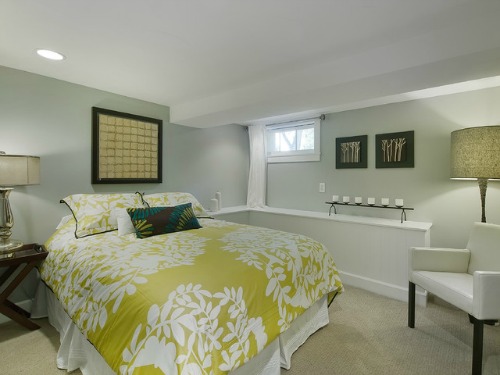 This basement bedroom should be dark, but great lighting and light colors give it a light, airy feel, in spite of the tiny window.
This basement bedroom should be dark, but great lighting and light colors give it a light, airy feel, in spite of the tiny window.Basement - Basements are typically dark and gloomy because of small windows. Although ambient lighting is beneficial, natural light is simply the best form of light in a basement. If you have puny windows, you might consider enlarging them to bring in more natural light.
The psychology of lighting in home interior design
Cool light - Cool light is not the most flattering color for most complexions; it has a blueish tinge and can make people look tired and wan. Cool light should be used in a room that you want to be restful, like a bedroom.
Warm light - Warm light has a yellowish tinge and creates a comfortable or intimate setting. Use this type of light in rooms where socializing will occur.
Natural light - Is a good mood enhancer, helpful in creating positive energy and activity. Natural light will also give you more pep and ease depression.
Soft lighting - Low soft light in warm colors will camouflage flaws and details and create an intimate atmosphere. Used in the wrong setting, soft lighting can make a room bleak and depressing.
Home staging lighting tips
The combination of natural and artificial light are key elements for opening up space in a small room. Open draperies or curtains to allow as much natural light as possible to flow into each room.
- One glaring overhead light fixture can dominate a room, drawing the eye to that one spot. Apply another source of light to keep the eye from fixating.
- For small bedrooms, mount wall sconce lighting fixtures on the wall on each side of the bed. The most practical task lighting fixtures for reading in bed are swing-arm wall lights.
- Another option for a small bedroom is to hang pendent lights from the ceiling on each side of the bed. Be sure to hang them low enough that you can turn them off while lying in bed.
- Home buyers love recessed lighting! Recessed lighting is the answer for low ceilings and small spaces, because they are, well…recessed into the ceiling.
- There is such a thing as TOO MUCH LIGHT! If you have floor to ceiling south-facing windows that let in too much midday heat, cover them with shades or blinds.
- When showing your house to prospective buyers, turn on every single light to brighten your home.
- Be sure to up the wattage if your lighting is too dim, but follow the recommended wattage on your light fixtures.
- To minimize glare, swap out clear bulbs with frosted ones.
- Every average-sized room should have a least three light sources.
- Mirrors are a wonderful designing tool for bouncing and reflecting light around a room. Place a mirror where it reflects an outdoor view or a lovely lighting fixture. Mirrors will add extra dimension and the feeling of spaciousness.
- Use bulbs of the same color in a room to avoid color inconsistencies of your floor, furniture, and accessories.
- Use up-lights (torcheres) to brighten dark corners. Dark corners make a room look smaller.
- Aim accent lights toward focal points, objects, or interesting architectural features that you would like to emphasize.
- Remove heavy or dark window treatments to bring more natural light into a room.
- It can be confusing choosing the right lampshade for a lamp base. For tips on selecting lampshades, go to www.lampsusa.com.
- For information on selecting the right kind of lightbulbs for your fixtures, go to www.thomaslighting.com.
- For tips on exterior lighting go to outdoor lighting.
Return from lighting to home page.
